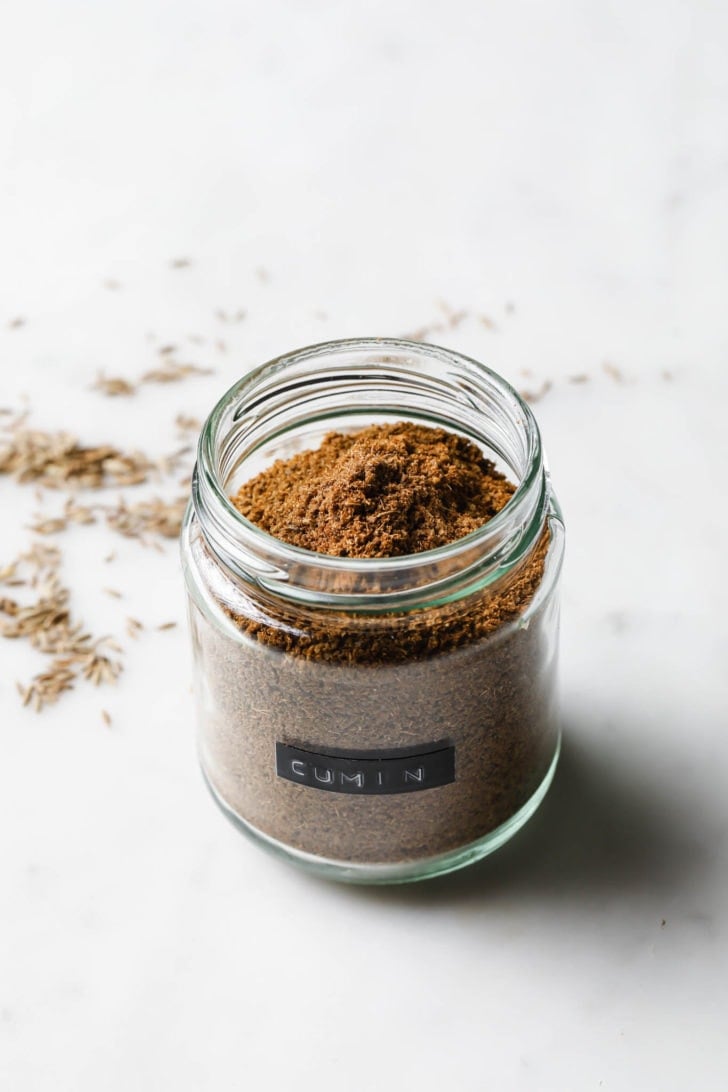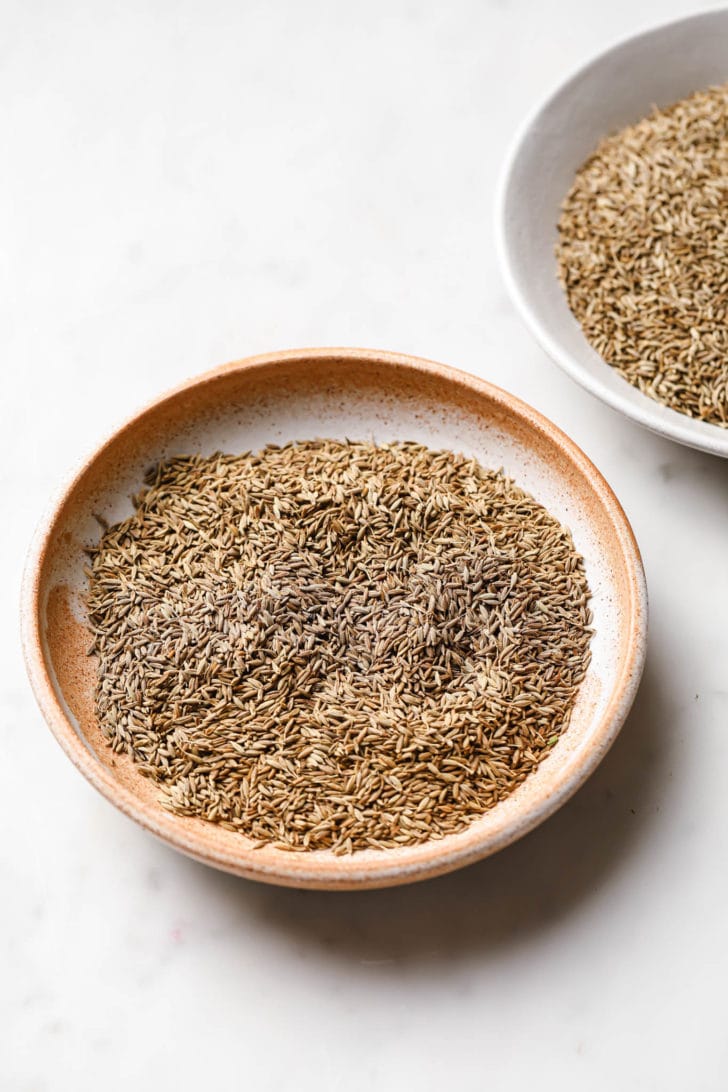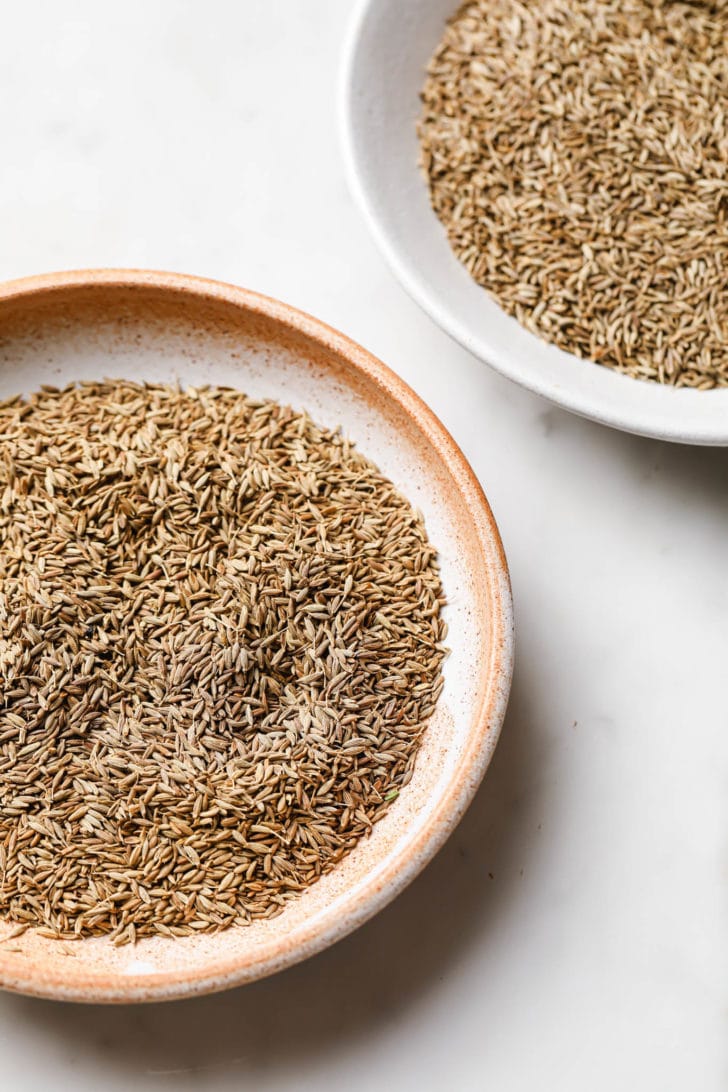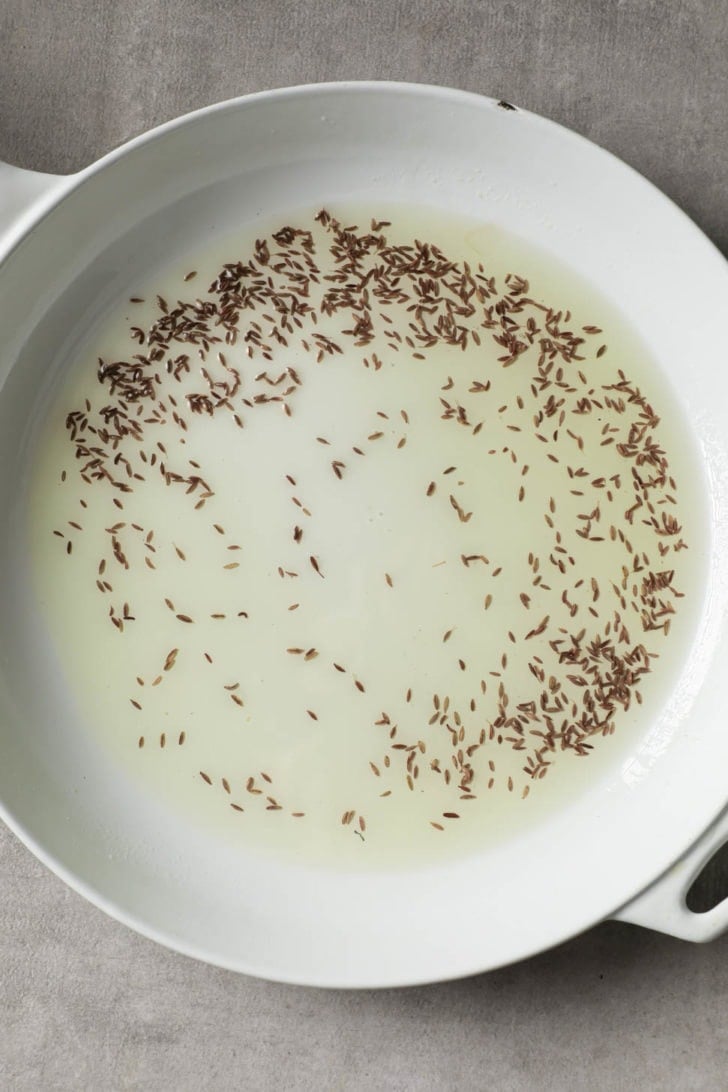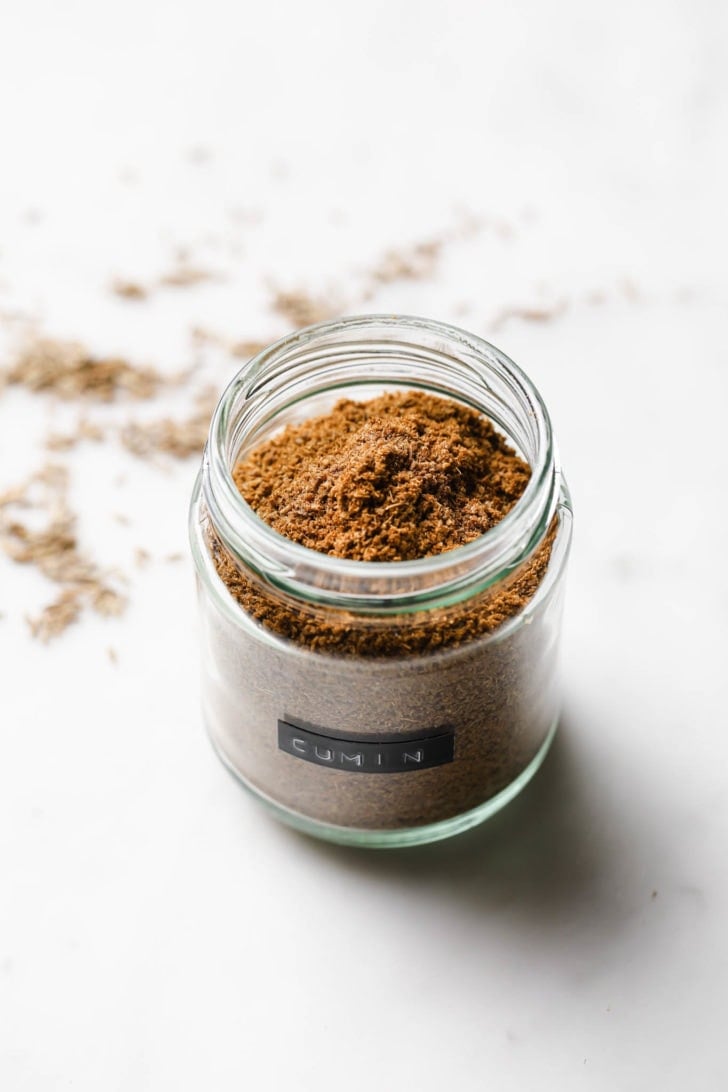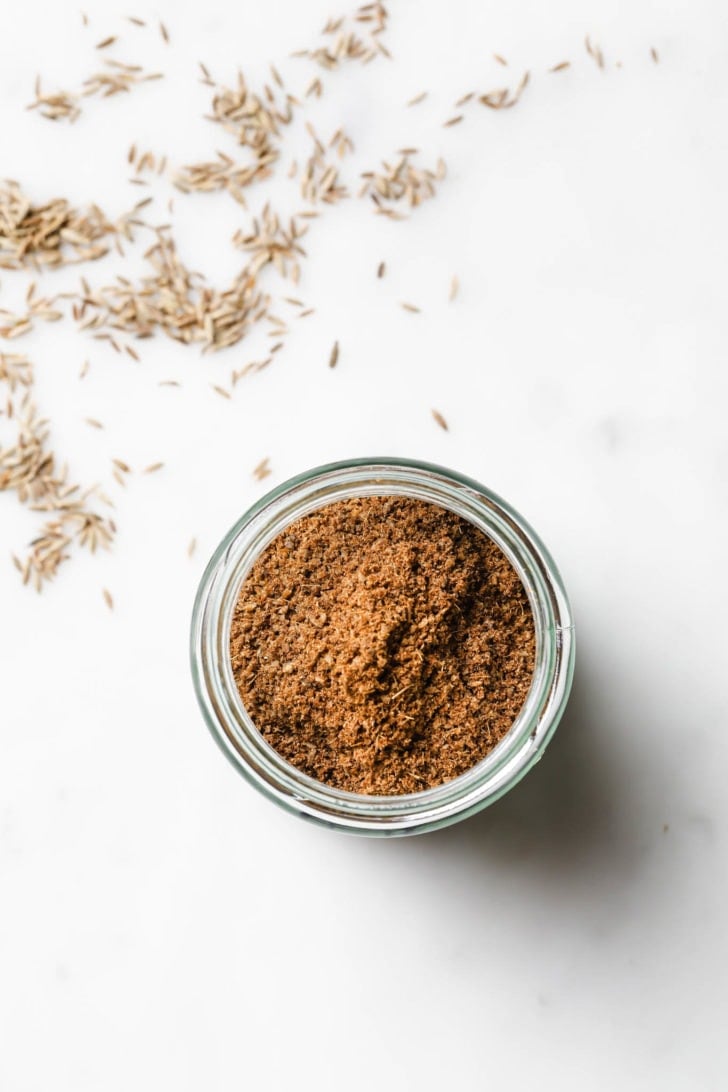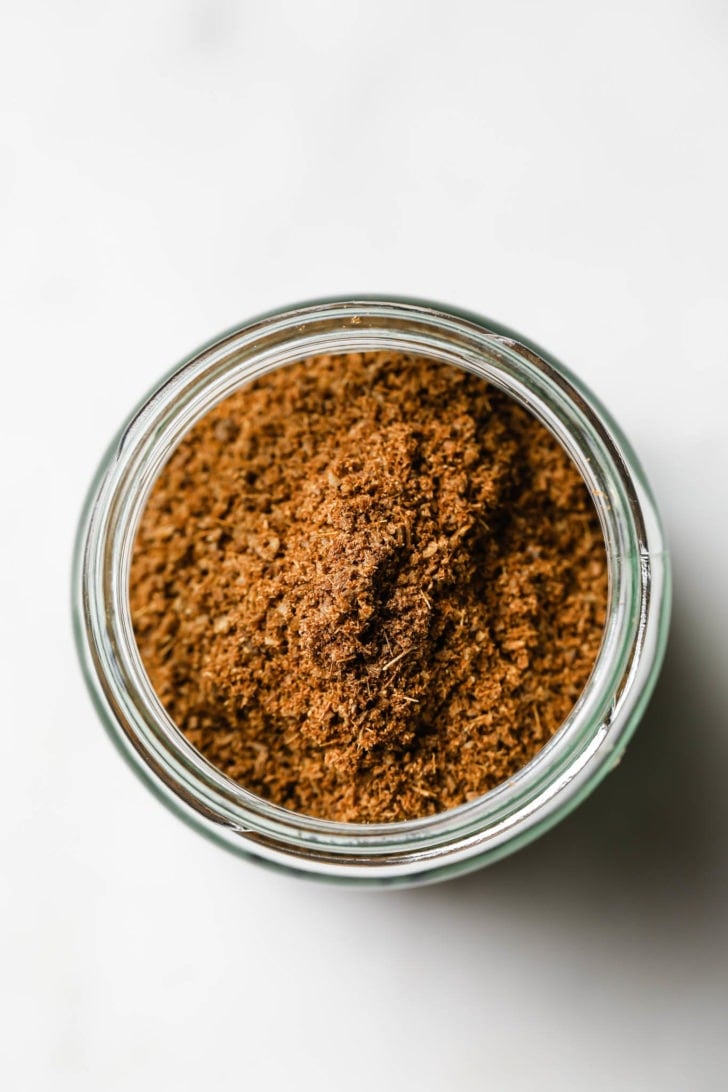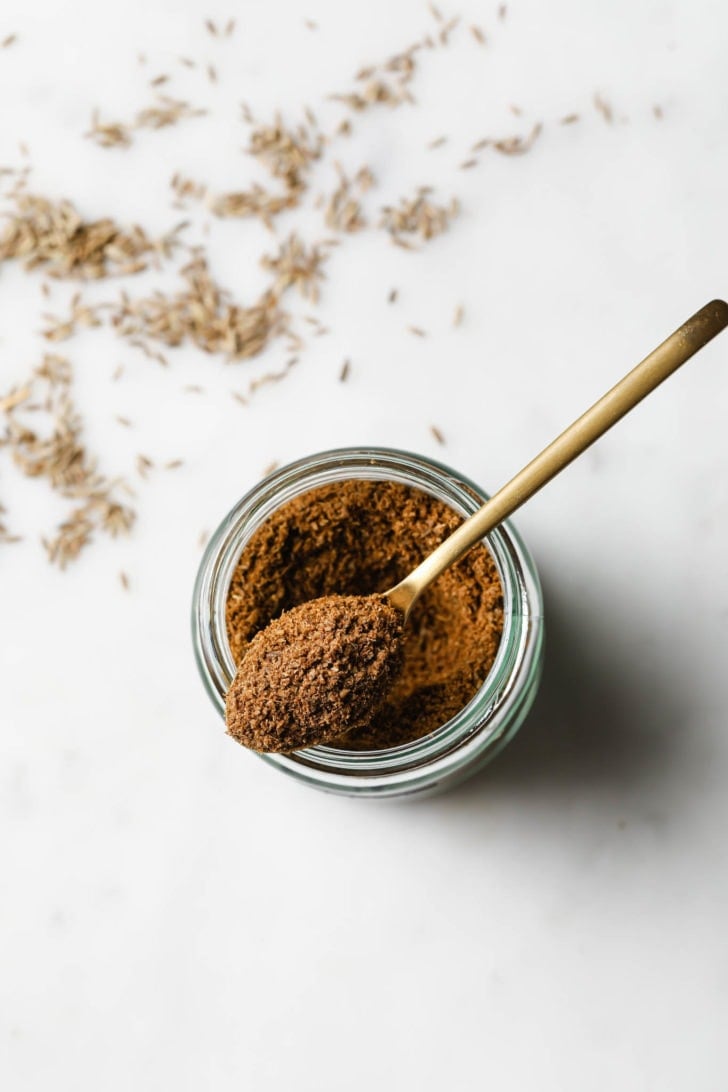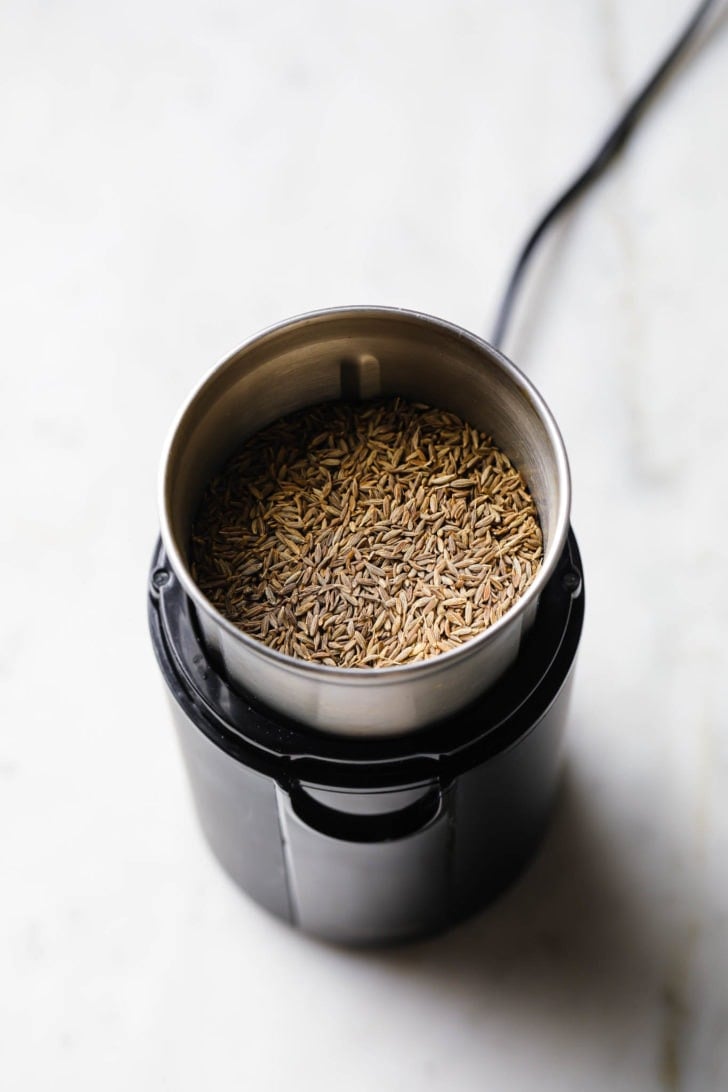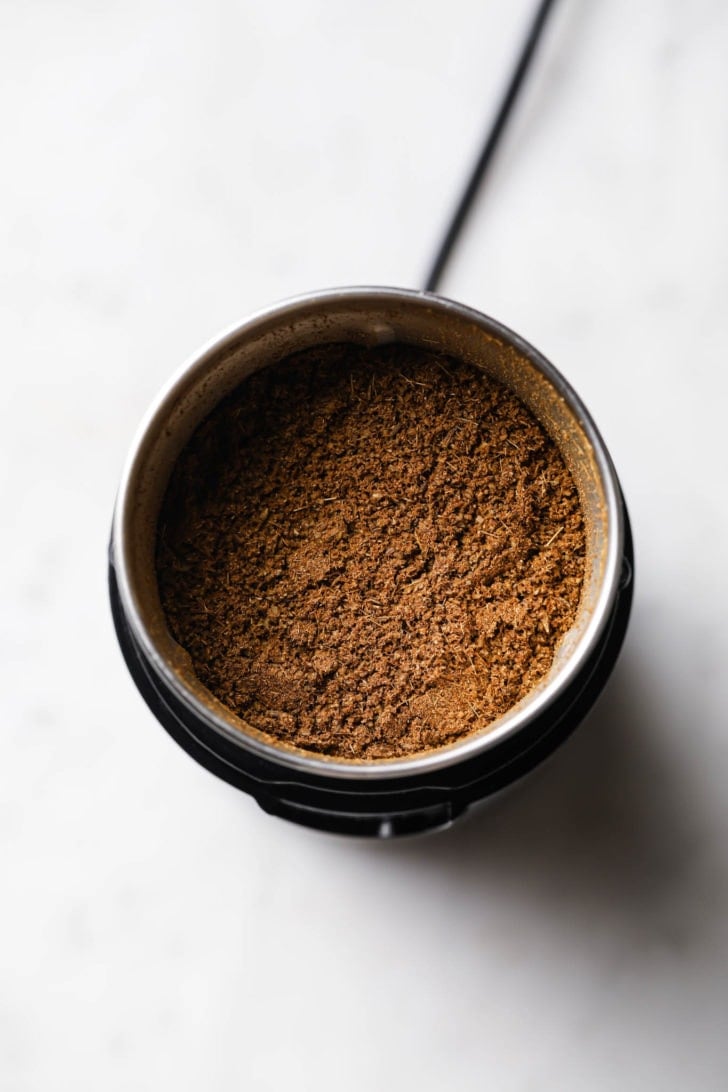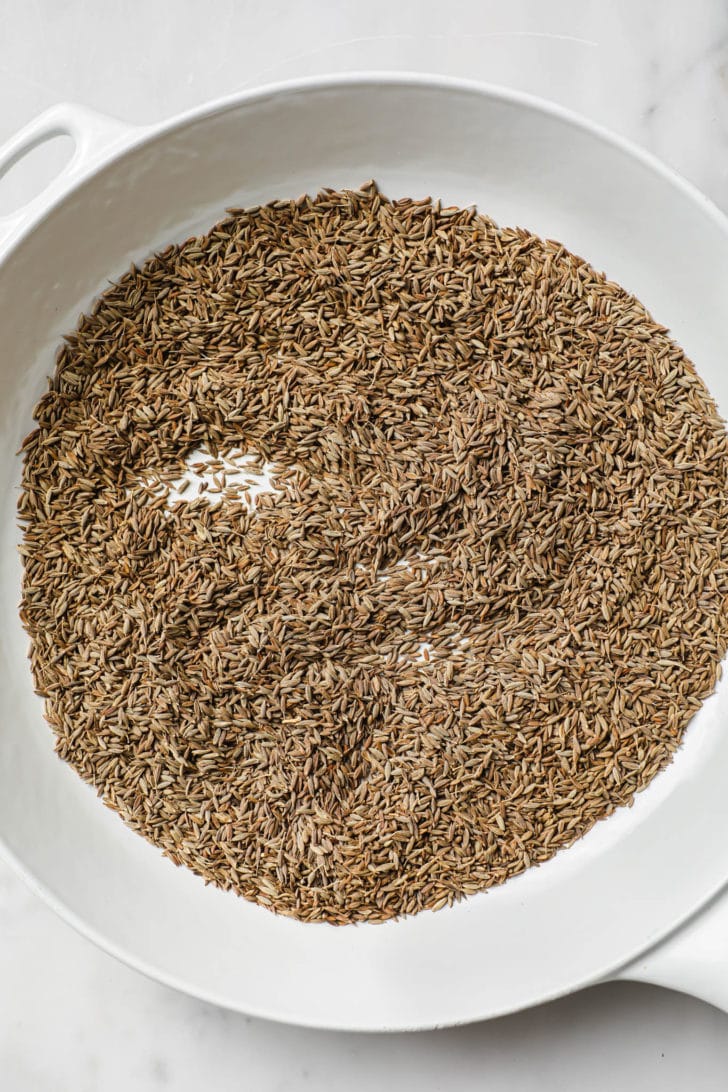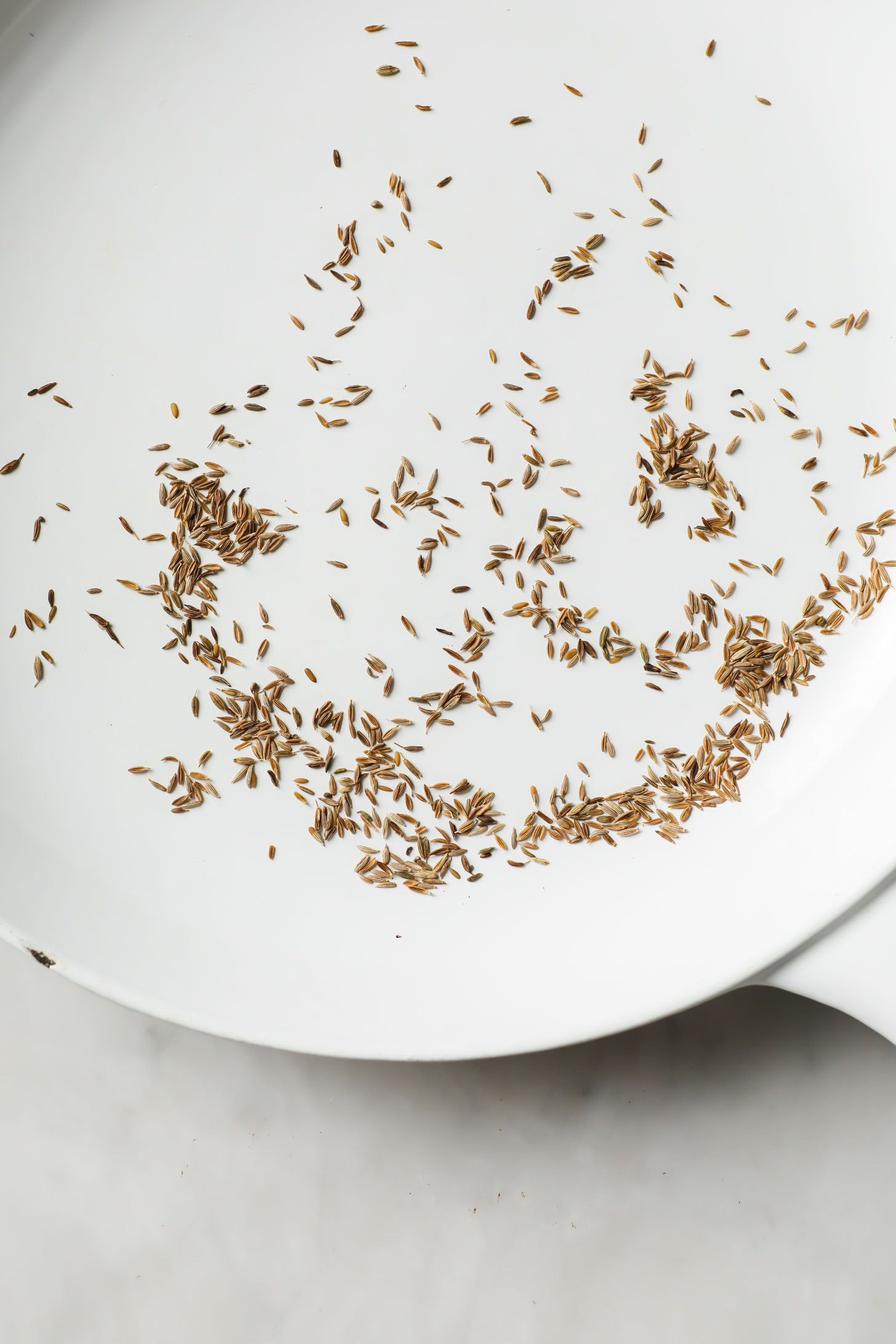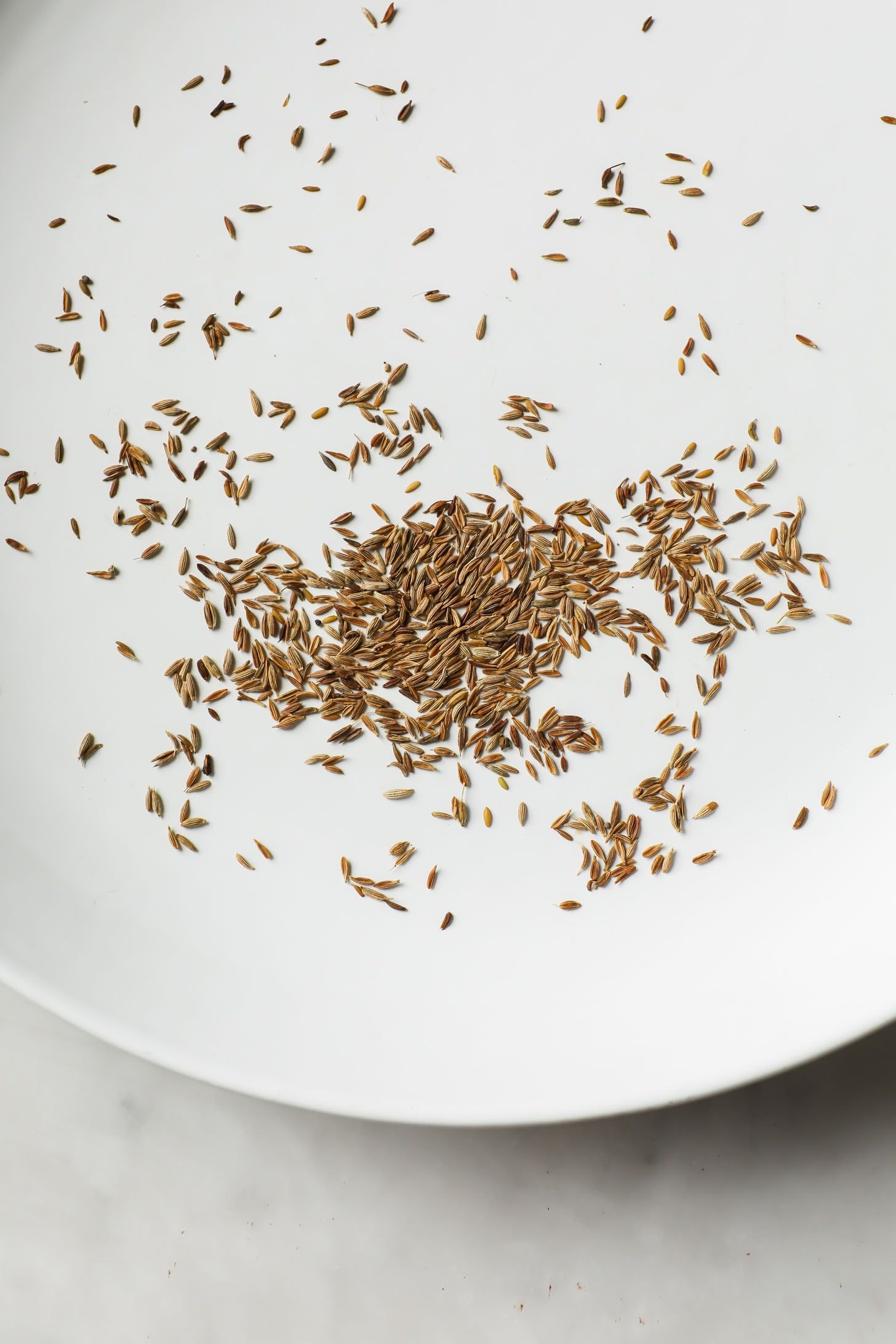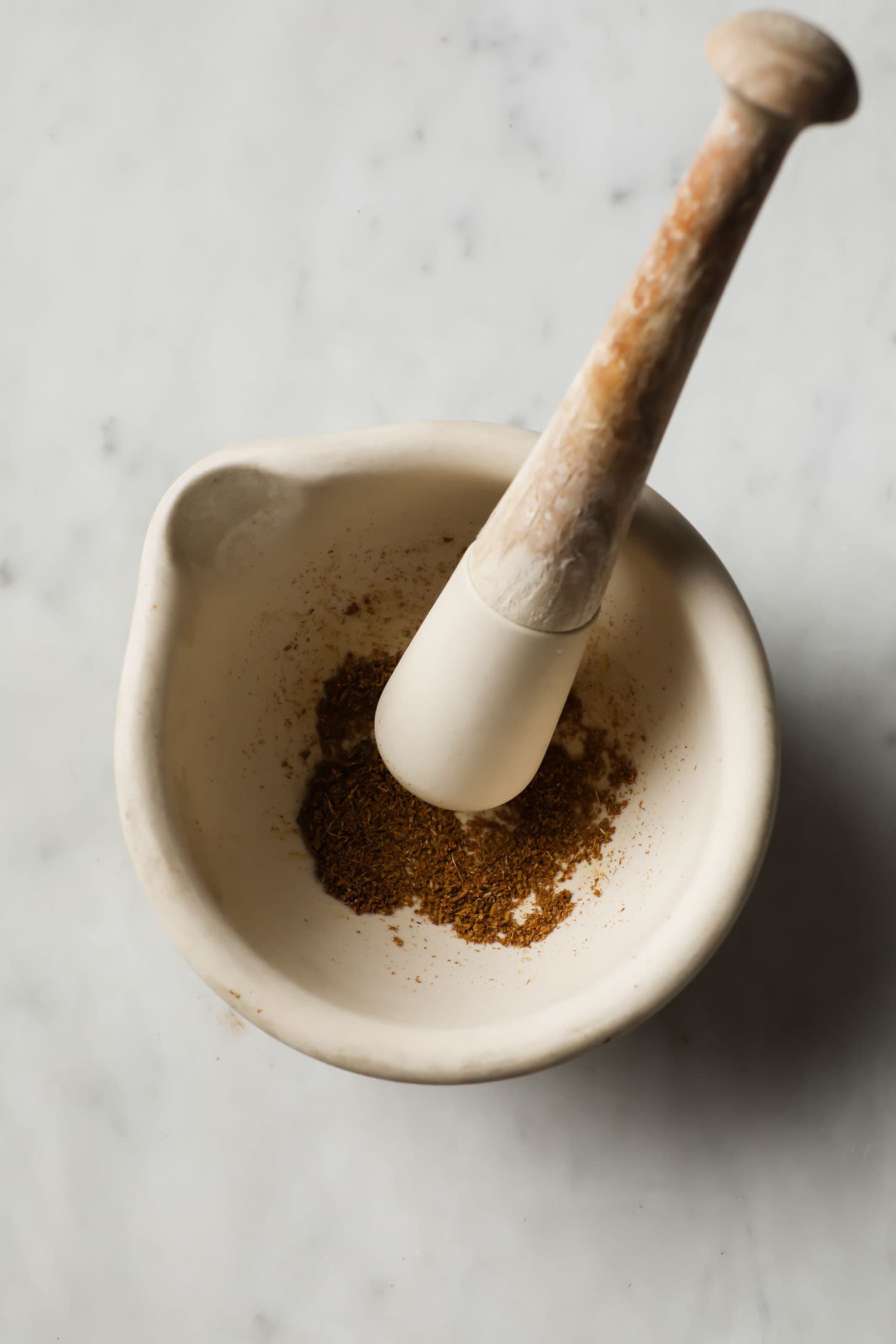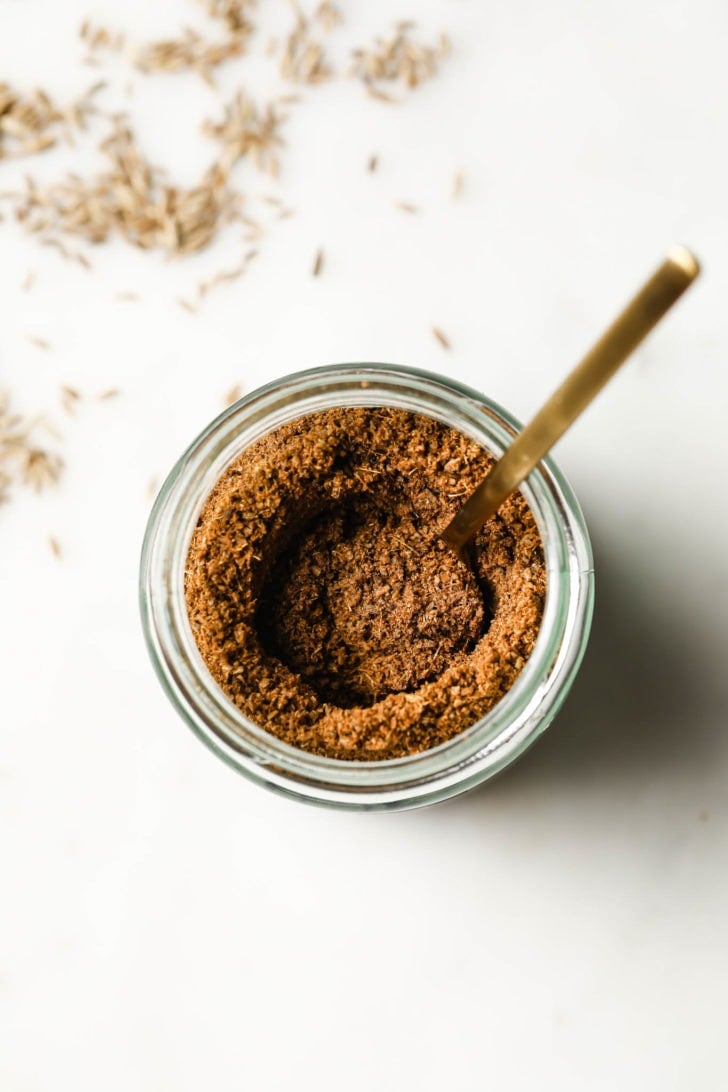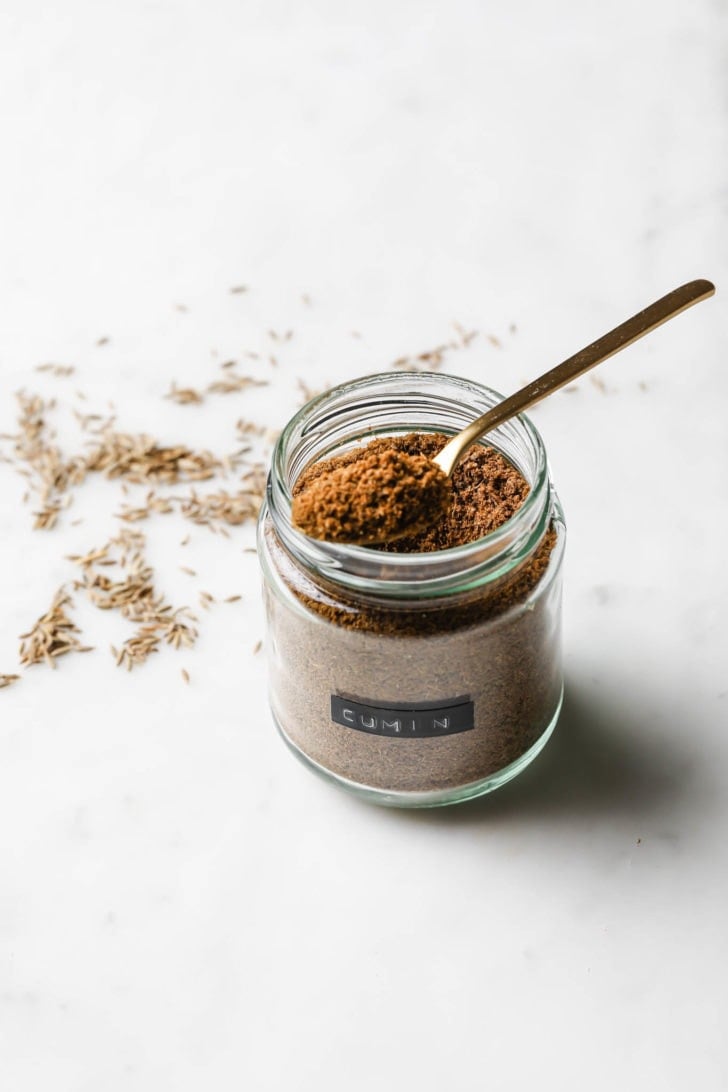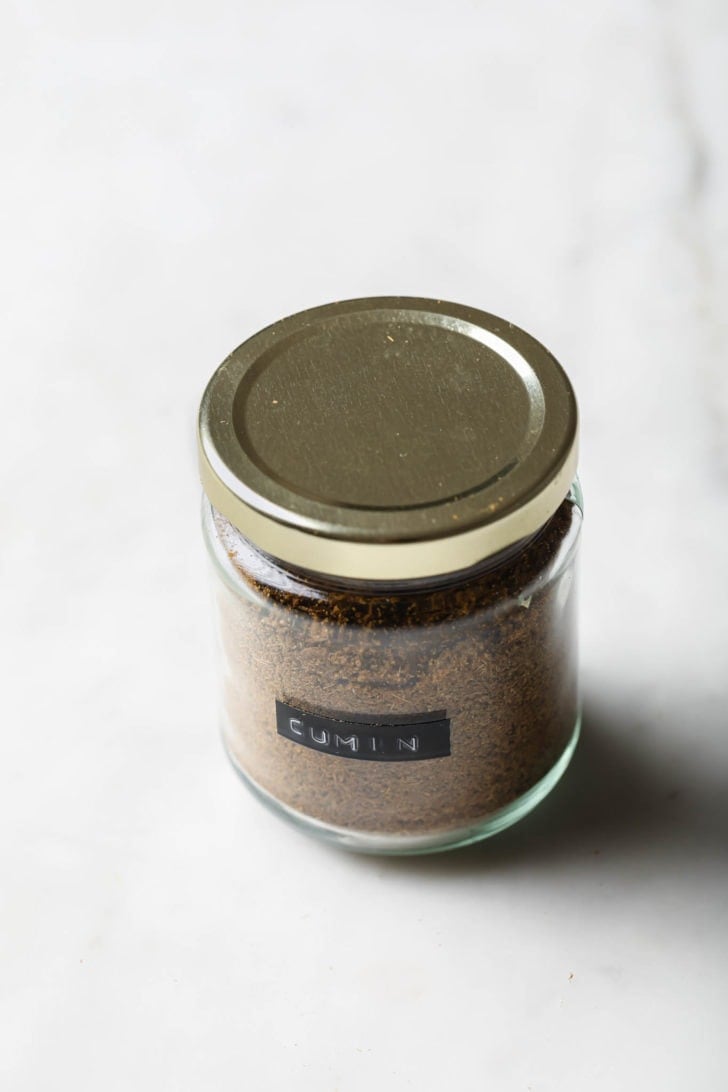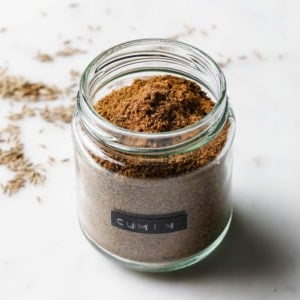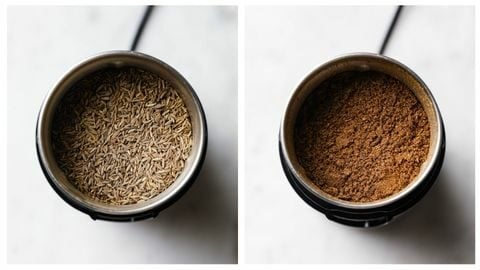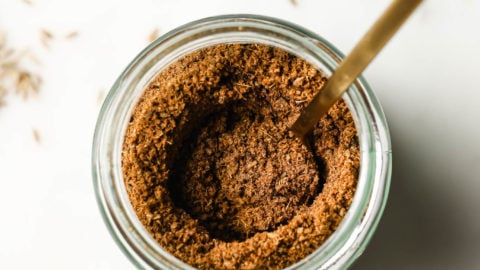And here’s all you need to know about cumin powder. This is a sister post to coriander powder, another spice I always make at home. Both of these blog posts are meant to solve all your spice-related conundrums. Let’s begin! Enter your email below and get it sent straight to your inbox. Plus, get recipes & tips every week!
What is Cumin?
Cumin is a plant (cuminum cyminum) of the parsley family. Unlike coriander, which is famous for its leaves as well as its spice, cumin is usually grown only for its seeds. Called Zeera or Jeera in Urdu or Hindi, Cumin is one of the most crucial spices in South Asian cuisine. Cumin is sometimes also referred to as White Cumin, or Safed Zeera, to indicate its distinction from Black Cumin, or Kaala Zeera. In either whole and ground form, cumin shows up in just about every South Asian main dish.
Origins and History
Cumin spice originated in the Middle East, and its name is derived from the Arabic word ‘kamun‘. References to cumin are found in the Old & New Testaments as well as in Egyptian texts. It’s said to have made its way to India by traders traveling down the Arabian/Persian Gulf. If you want to learn more about cumin, including its nutritional profile and health benefits, the Pharmacognosy journal shares a credible review of cumin.
What is Cumin Powder?
Cumin powder is simply ground cumin seeds. The process of grinding makes it more aromatic, richer, and bolder in flavor compared to the seeds.
How to use Cumin Seeds in South Asian Cooking
Many recipes use either cumin seeds OR cumin powder. For example, many traditional Pakistani recipes don’t call for cumin powder if cumin seeds are used and vice versa. I often use both if I think a recipe benefits from it. Here’s more on when and how to use the seeds and powder:
Examples
Not only do cumin seeds add flavor and aroma to curries, they also add crunch and visual appeal without darkening the curry as cumin powder would (ex. dal). Of course, there aren’t any rules on how to use cumin seeds (case in point: Zeera Biscuits). But here are a few examples of how Cumin Seeds are used in South Asian Cooking:
Curries: Add the seeds to hot oil to roast the seeds and infuse the oil with flavor. For milder flavor, add while forming the base of a curry along with the remaining spices. Tarka: Cumin seeds are often associated with the tarka, or tempering, for all kinds of dal recipes. You can add a tarka to brighten up just about anything, including vegetables, salads, and even nachos. Rice: Use to add texture and a nutty taste to rice dishes. (Examples: a simple zeera rice, chana pulao, or chicken pulao.) Potatoes: You’ll often see cumin seeds wherever potatoes are used (ex. stuffing for Samosas or Aloo Paratha).
How to use Cumin Powder in South Asian cooking
Curries: Unlike cumin seeds, cumin powder is usually not added to hot oil to start a curry. Instead, you’ll add cumin powder while forming the base of the curry, usually after the onions, tomatoes, protein, or vegetables. Alongside coriander powder: Cumin powder often used in conjunction with coriander powder, which adds light and vibrant notes to balance cumin’s warmer, stronger flavor. Snacks: Ground cumin is also used as an ingredient in marinades or to make snacks & sides such as Aloo ki Tikki, raitas, or chutneys.
Why You Don’t have to toast Cumin Seeds (and When You should)
As much as toasted spices are touted as superior to their untoasted counterparts, I don’t think it’s absolutely necessary to toast.Here’s why: In most curry recipes, you’ll almost always add cumin powder early on in the cooking process. That means it’ll likely get cooked in oil while you’re making the dish. Using roasted cumin powder can lead to stronger, sometimes even bitter flavor.Toasting, or dry roasting, dries out any residual moisture from the cumin seeds while bringing out the natural oils. Whether you should toast cumin or not depends on how intense you’d like the flavor.
When to use Toasted Cumin Powder
In some cases, toasted cumin powder just works better.
For raitas such as restaurant-style mint raita or cucumber raita, seekh kababs, chaats, and chutneys. To add deeper cumin flavor in curries, especially if you want to add it toward the end. Spice blends: Such as garam masala and chaat masala. (Interestingly, curry powder is usually made with unroasted cumin powder, probably because it’s added earlier)
How to tell if store-bought cumin powder is toasted
Generally, most grocery stores sell untoasted cumin powder. A quick way to tell:
If it’s lighter, earthy brown, it’s likely made of untoasted seeds (here’s McCormick’s Simple Ground Cumin.) If it’s a darker shade of brown, that means it’s likely been toasted (see McCormick’s Roasted Ground Cumin).
How to make Cumin Powder
How to Toast Cumin Seeds
To toast cumin seeds, heat a small to medium pan over medium-low or medium heat. Add the cumin seeds and toast, stirring and shaking the skillet often, for 3-4 minutes, until visibly toasted. The seeds will deepen in color and become highly aromatic.
For a medium flavor and color, toast the seeds until golden brown. For a more pronounced, toasty flavor, toast it a little longer until it is dark brown, stirring constantly to prevent burning.
Can you use Cumin Seeds & Cumin Powder interchangeably?
You can easily use seeds to make powder, but substituting powder for seeds is a bit more trickier.
If a recipe calls for ground cumin powder and you don’t want to bother grinding the seeds, just substitute an equal amount of cumin seeds.
If a recipe calls for whole cumin seeds and you only have powder: Use slightly less powder (around ¾ teaspoon of ground cumin for 1 teaspoon whole seeds) in place of the seeds. Though it won’t get the texture, you’ll still get the flavor. Note: When a recipe calls for frying cumin seeds in hot oil (i.e. tarka, or to begin a curry), add the cumin powder later in the recipe.
Storage Tips
Whole cumin seeds can be stored for longer than ground cumin and toasted cumin. To increase shelf life, store the spices in an airtight container in a cool, dark drawer or cabinet.
Cumin seeds can be stored for up to 1 year. Ground cumin can be stored for up to 6 months.
Tried this recipe? If you have a minute, please consider leaving a comment telling me how it was! You can also take a quick picture and upload it directly into the comments. If you’re on Instagram, please tag me so I can see your creations. I truly love hearing from you. Thank you!
